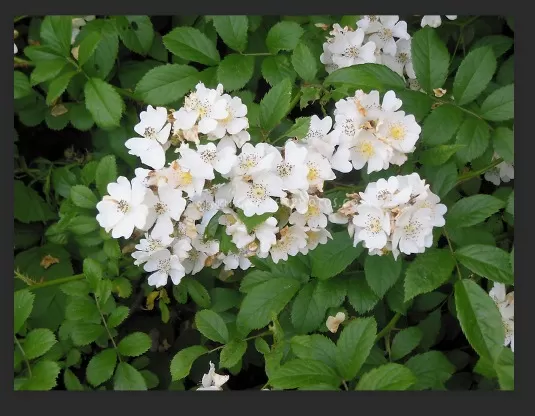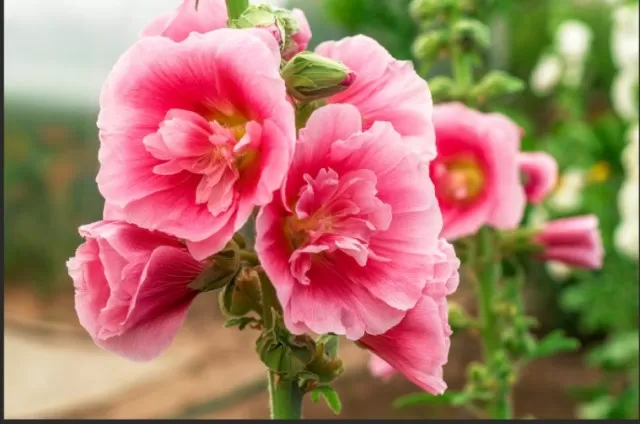The Allure of English Garden Flowers in Cottage Gardens.Creating an English cottage garden is all about embracing the charm of nature’s whimsy and capturing the essence of timeless beauty.
To achieve this romantic ambiance, consider incorporating these delightful florals into your gardenWhen planting these florals, embrace the free-flowing and informal layout typical of English cottage gardens. Interplant them with each other, allowing them to grow and mingle harmoniously, creating a tapestry of colors and textures. By embracing these lovely florals, your garden will bloom with the spirit of an English cottage paradise, inviting you to revel in the beauty of nature’s grace and romance.
Designing an Enchanting Cottage Garden: Embracing Nature’s Delightful Chaos

When it comes to crafting a cottage garden, there are no strict guidelines to follow.
These informal and asymmetrical spaces are meant to emulate the beauty of nature, where colors and plants intertwine in carefully cultivated yet effortlessly charming beds. The hallmark of English cottage gardens lies in the abundance of plants in various sizes, hues, and shapes, creating a breathtaking visual spectacle.
Originating in the 18th century as a rebellion against rigid formal garden designs, the cottage garden is a testament to the romanticism of the natural world.
With their sweeping layouts, these gardens boast lush greenery, winding pathways, inviting benches, and ornate iron gates.
The English garden flowers, with their contrasting colors, shapes, and heights, harmoniously complement neatly trimmed hedges, forming an enchanting landscape that perfectly balances classical elegance with whimsical romanticism, evoking the imagery found within the pages of a Jane Austen novel.
To infuse your garden with a touch of this captivating allure and vibrant color, consider the following suggestions.
Delphinium (Delphinium elatum): A Majestic Presence in the English Cottage Garden
Admired for its magnificent display of vibrant spikes, ranging from captivating shades of blue, purple, to delicate pink, the delphinium (Delphinium elatum) stands tall, soaring up to an impressive height of 6 feet.
Its striking presence makes it an ideal backdrop for enhancing the beauty of other enchanting English garden flowers. Flourishing in the climatic conditions of USDA Zones 3 to 7, this perennial from the buttercup family thrives best in a sunny location with well-drained and adequately moist soil. However, it’s worth noting that scorching afternoon sun can be overwhelming for this slender beauty.
Tall varieties of delphiniums may require support in the form of staking, especially in areas prone to strong winds.
By choosing a sheltered spot, gardeners can ensure the graceful stems remain upright and undisturbed. While delphiniums can be susceptible to powdery mildew and crown rot, proper positioning and appropriate watering practices usually contribute to their overall health and resilience.
As you envision your picturesque English cottage garden, the delphinium’s regal charm promises to add an air of sophistication and allure, inviting you to create a captivating haven of colors and textures, reminiscent of classic literary landscapes.
With care and consideration, this majestic flower will thrive, transforming your garden into a realm of natural wonder and delight.
Rambling Rose (Rosa multiflora): A Picturesque Marvel in the Cottage Garden

In the charming tapestry of a cottage garden, roses hold an indispensable place, and among them, the rambling rose (Rosa multiflora) stands out as a vigorous and robust beauty.
This plant possesses the remarkable ability to gracefully ascend a pergola or cloak unsightly structures and walls in the garden, transforming them into enchanting features. In the English cottage garden, these rose ramblers create a mesmerizing spectacle, adorning the landscape with an abundance of fragrant, small roses clustered in magnificent sprays, resulting in a cascading burst of colors that typically grace the late spring or early summer.
Thriving splendidly in a range of climates, the hardy rambling rose finds its best growth in Zones 4 through 10.
One of its most alluring traits is its resilience, as it can endure neglect, tolerate poor soil, and even embrace partial shade without losing its captivating allure. Moreover, this delightful rose variety is known for its inherent resistance to various diseases, ensuring that its beauty remains unaffected.
While the rambling rose is a symbol of natural vigor, some gentle pruning is necessary to maintain its best appearance and to prevent it from overtaking a Garden Bed.
With proper care and guidance, this picturesque marvel will flourish, embellishing your cottage garden with a Timeless Elegance and a sense of romance that has inspired poets and dreamers throughout the ages. Let the rambling rose entwine its way into the heart of your garden, weaving tales of beauty and serenity, as you cherish the tender moments amidst its fragrant blooms.
Peony (Paeonia): A Timeless Elegance in the Garden
Steeped in tradition and revered for their timeless beauty, peonies (Paeonia) grace the garden with a palette of three classic colors: pristine white, delicate pink, and vibrant red.
Flourishing harmoniously in USDA Zones 3 to 7, these captivating blooms thrive best when basked in full sun, while also relishing well-drained soil. As nature’s splendid performers, peonies unveil their resplendent petals in late May, creating an enchanting spectacle that captures hearts with their intoxicating fragrance.
Available in both single and double bloom varieties, these rotund beauties exude an allure that transcends generations.
Once their blooming season has passed, the glossy leaves of these midsize, bushy plants remain, lending an elegant framework that gracefully complements the blooms of other flowers. As winter sets in, the foliage gently retreats, only to emerge anew the following spring, like a floral rebirth.
While peonies can be divided when they grow large, they prefer to find a permanent abode in the garden, as they don’t take kindly to being uprooted.
Strategic planting is essential, leaving ample space of 3 to 4 feet between these delightful blooms to ensure proper air circulation and allowing them to breathe freely. Furthermore, it is wise to avoid placing them too close to trees that may compete for essential nutrients.
Embrace their regal nature by providing them with rich soil, though take care not to smother them in excessive mulch, as they cherish just the right balance of nurturing.
With peonies adorning your garden, you’re not just cultivating flowers; you’re preserving a legacy of elegance that has enchanted gardeners for generations.
Amidst the radiant hues and heady scents, peonies create a haven of serenity, whispering tales of bygone eras and offering a respite from the fast-paced world. Embrace the perennial grace of peonies and watch as your garden becomes a sanctuary of Timeless Charm and natural splendor.
Hollyhocks (Alcea rosea): Majestic Pillars of Life and Beauty in the Cottage Garden

For those seeking to elevate their cottage garden to new heights, hollyhocks (Alcea rosea) stand tall, reaching heights of up to 8 feet.
With their stately stalks adorned in a delightful array of light yellow, pink, rich reds, and deep purples, these alluring flowers beckon pollinators, drawing them towards their captivating blooms. As a self-seeding biennial, hollyhocks carry profound symbolism, representing the eternal cycle of life, fertility, and bountiful abundance.
Thriving in the garden oasis of Zones 3 to 9, hollyhocks bask in the glory of full sun and flourish in well-drained soil.
They grace the landscape with their resplendent blooms from late spring all the way through midsummer, persisting admirably until the onset of frost. An age-old favorite, the hollyhock boasts a rich history of medicinal uses, having served as an herbal remedy in bygone eras.
Remarkably, every part of this versatile plant is edible, and its flowers are occasionally used to create soothing teas.
As these majestic pillars stand tall in your garden, they not only impart grandeur and elegance but also foster a thriving ecosystem, attracting and nourishing pollinators, thus contributing to the vitality of the natural world around them.
Embrace the enduring charm of hollyhocks as they symbolize the essence of life’s ever-renewing spirit and invite you to savor the enchanting beauty and historical significance of these remarkable blooms. Amidst the gentle rustling of hollyhock petals, you’ll find solace and inspiration, as if time itself has paused, and you are transported to a garden that transcends the boundaries of eras and generations.
Let the hollyhocks take center stage in your cottage garden and weave a tapestry of color, life, and legacy, reminding you of the timeless connection between nature and humanity.
*The information is for reference only.